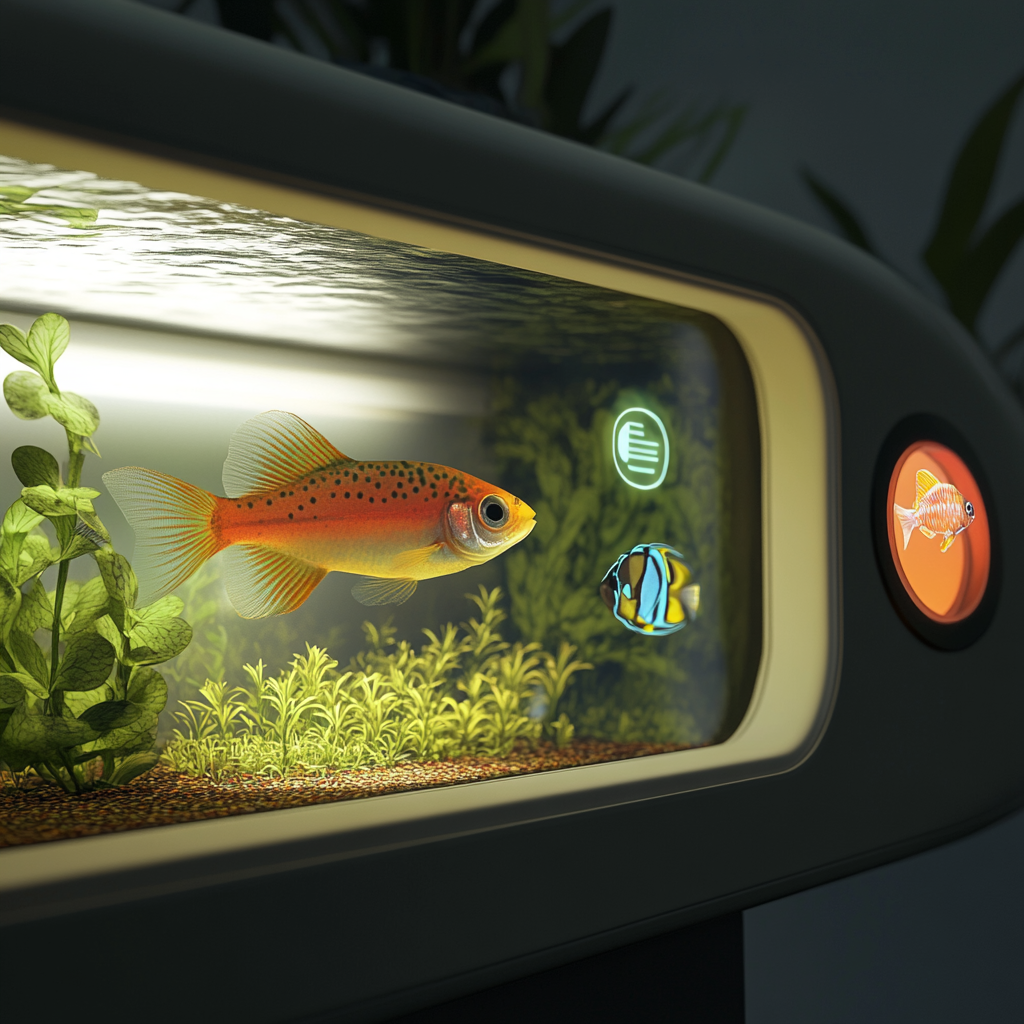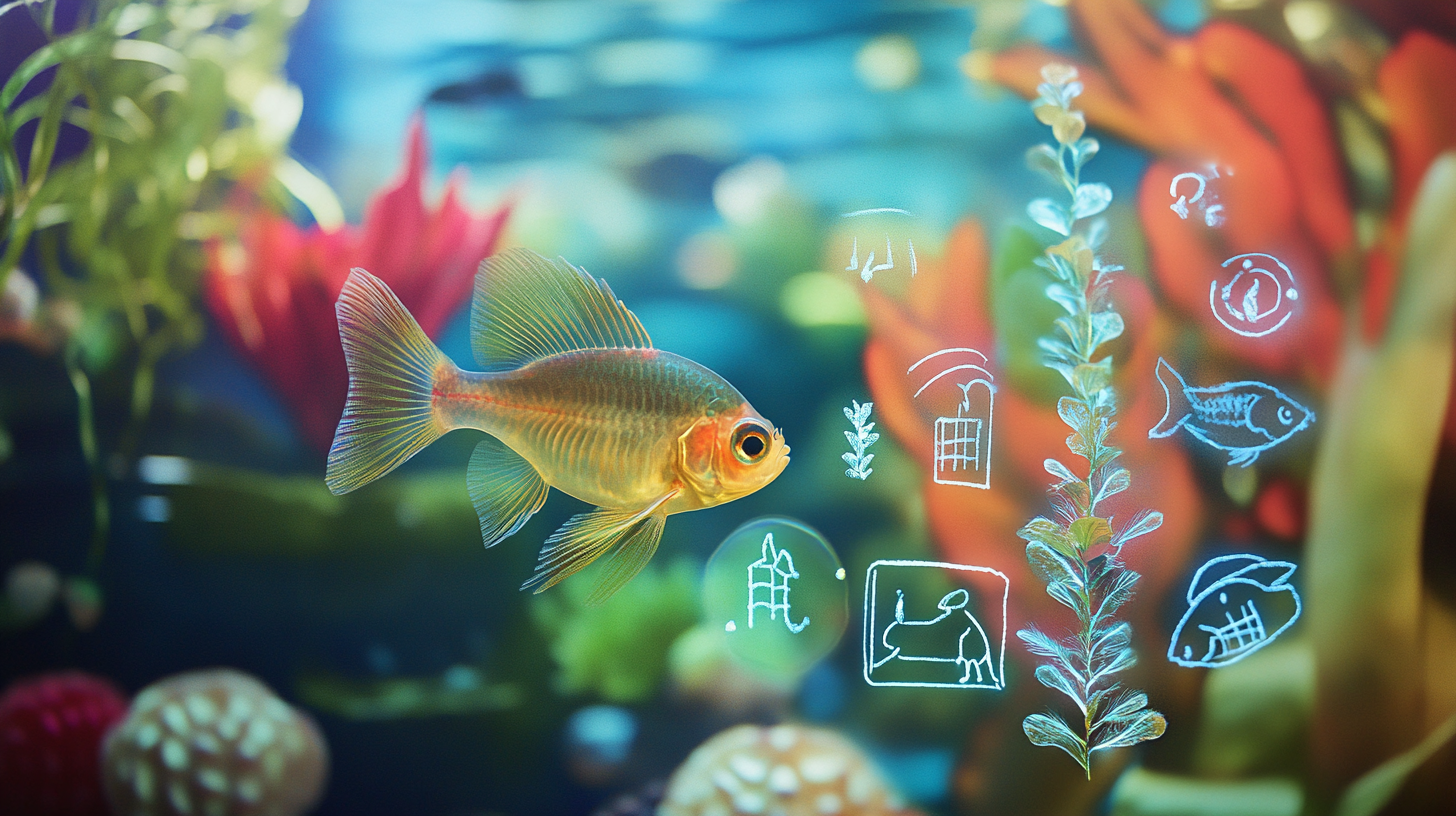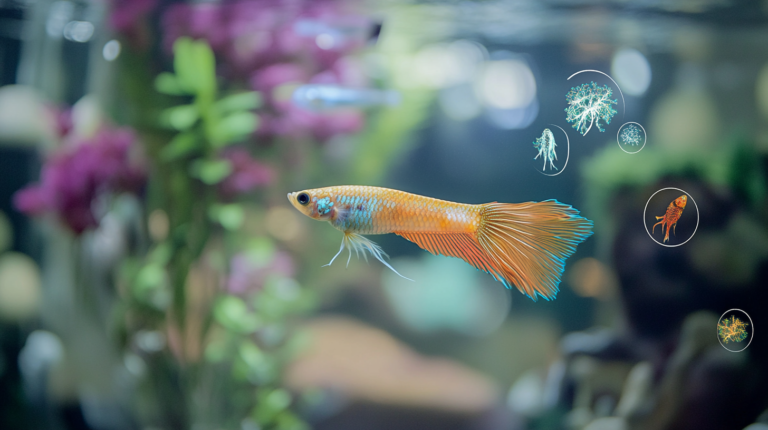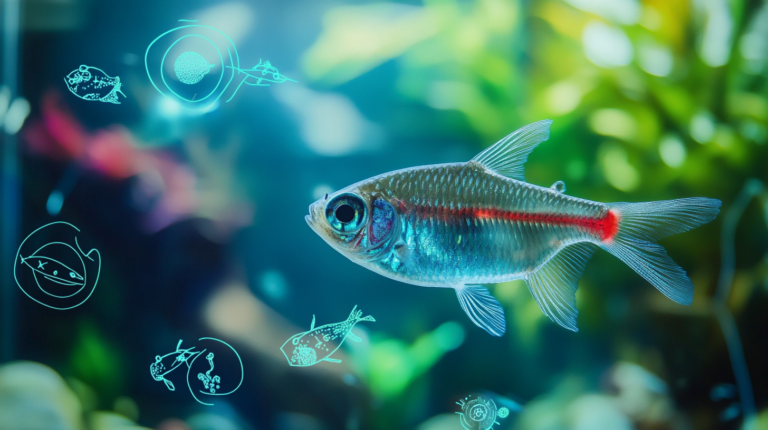Discover the 5 most dangerous toxic substances causing chemical poisoning in fish and learn how to protect your aquarium with expert prevention and treatment strategies.
Table of Contents
Maintaining a healthy aquarium environment is crucial for the wellbeing of your aquatic companions. Unfortunately, chemical poisoning in fish remains one of the most common yet overlooked causes of sudden illness and death in home aquariums. Whether you’re a seasoned aquarist or just starting your fishkeeping journey, understanding the toxic substances that can harm your underwater ecosystem is essential for prevention and quick intervention. This comprehensive guide explores five dangerous chemicals that pose significant threats to your aquarium inhabitants, their warning signs, and effective measures to protect your finned friends from chemical poisoning in fish.


Understanding Chemical Poisoning in Fish
Chemical poisoning occurs when fish are exposed to harmful substances in their water. Unlike diseases that may take days or weeks to develop visible symptoms, chemical toxicity can affect fish rapidly—sometimes within hours of exposure. The delicate gill structures and scales of fish make them particularly vulnerable to water-quality issues that might seem minor to us.
How Fish Process Toxins
Fish absorb chemicals through three primary pathways:
- Gill absorption – Most chemicals enter directly through the gills during respiration
- Skin contact – Some toxins penetrate the protective slime coat and scales
- Ingestion – Chemicals can be consumed through contaminated food or when fish drink water
What makes chemical poisoning particularly dangerous is that many toxins bioaccumulate in fish tissue, meaning even low-level chronic exposure can eventually reach harmful concentrations inside the fish’s body.
Toxic Substance #1: Chlorine and Chloramine
What Are They?
Chlorine and chloramine are disinfectants added to municipal water supplies to kill harmful bacteria. While they make tap water safe for human consumption, these chemicals are highly toxic to fish even in small concentrations.
Sources of Contamination
- Untreated tap water added during water changes
- Municipal water treatment facilities that increase chlorine levels during certain seasons
- Some cleaning products used near aquariums
Symptoms of Chlorine Poisoning in Fish
Fish suffering from chlorine poisoning typically display the following symptoms:
- Rapid gill movement and gasping at the water surface
- Erratic swimming patterns
- Redness or inflammation of the gills
- Excess mucus production
- In severe cases, death can occur within hours
Prevention and Treatment
Prevention:
- Always treat tap water with a quality water conditioner before adding it to your aquarium
- Let water sit for 24-48 hours to allow chlorine (but not chloramine) to dissipate naturally
- Use activated carbon filtration as an additional safety measure
Treatment:
- Immediately add a double dose of dechlorinator if chlorine exposure is suspected
- Perform a 50% water change with properly treated water
- Increase aeration to help fish breathe more easily
- Consider adding aquarium salt (1 tablespoon per 5 gallons) to reduce stress
According to a 2023 survey by the American Pet Products Association, over 40% of new fish owners were unaware of the need to treat tap water before adding it to aquariums, making chlorine poisoning one of the leading causes of fish mortality in beginner tanks.
Toxic Substance #2: Ammonia
What Is It?
Ammonia (NH₃) is a colorless, toxic compound produced by fish waste, decaying food, and decomposing plant matter. In a properly cycled aquarium, beneficial bacteria convert ammonia to less harmful compounds, but ammonia spikes can quickly become deadly.
Sources of Contamination
- Overstocking (too many fish in the tank)
- Overfeeding
- Inadequate filtration
- New, uncycled tanks (“new tank syndrome”)
- Dead fish or plant matter left in the aquarium
- Filter maintenance performed incorrectly (removing too much beneficial bacteria)
Symptoms of Ammonia Poisoning in Fish
- Red or bleeding gills
- Gasping for air at the water surface
- Lethargy and loss of appetite
- Clamped fins
- Red streaks on body or fins
- Increased mucus production on gills and body
- “Burns” appearing as black or white patches on skin
Prevention and Treatment
Prevention:
- Properly cycle your aquarium before adding fish
- Stock fish gradually and avoid overstocking
- Feed appropriate amounts (what fish can consume in 2-3 minutes)
- Perform regular partial water changes (10-25% weekly)
- Use biological filtration and don’t clean all filter media simultaneously
- Test water regularly for ammonia levels (aim for 0 ppm)
Treatment:
- Perform immediate 50% water change with treated water
- Add an ammonia-neutralizing product
- Reduce or stop feeding temporarily
- Add aquarium salt to reduce nitrite toxicity (if also present)
- Increase aeration and water movement
- Test water daily until levels stabilize at zero
The Aquarium Science Institute reports that ammonia levels as low as 0.25 ppm can stress fish, while concentrations above 2.0 ppm can be rapidly fatal to sensitive species. Even hardy fish experience gill damage at prolonged exposure to levels above 0.5 ppm.
Toxic Substance #3: Heavy Metals (Copper, Zinc, Lead)
What Are They?
Heavy metals are elements that can be extremely toxic to fish even at low concentrations. The most common problematic heavy metals in aquariums include copper, zinc, and lead.
Sources of Contamination
- Copper: Copper pipes, some medications, algaecides, plant fertilizers
- Zinc: Galvanized fixtures, certain metals in decorations, some fish foods
- Lead: Old plumbing, some decorative items, painted ornaments
Symptoms of Heavy Metal Poisoning in Fish
- Erratic swimming behavior
- Loss of equilibrium
- Increased mucus production
- Darkening of body color
- Lethargy
- Rapid gill movement
- Fin clamping
- Death in severe cases
It’s worth noting that invertebrates (shrimp, snails) are especially sensitive to copper, often showing symptoms at concentrations that fish might tolerate.
Prevention and Treatment
Prevention:
- Use a water conditioner that specifically detoxifies heavy metals
- Avoid metal decorations unless specifically made for aquariums
- Run tap water for 30 seconds before collecting for water changes
- Be cautious with medications containing copper in tanks with invertebrates
- Test for metals if you suspect contamination
Treatment:
- Perform large water changes (50-75%) with treated water
- Add activated carbon to your filter
- Use commercial metal-removing products containing EDTA or similar chelating agents
- For copper specifically, consider products like Cuprisorb if treating invertebrates
Research published in the Journal of Aquatic Animal Health found that copper concentrations as low as 0.1-0.2 ppm can be lethal to many species of fish, while some sensitive species show stress responses at even lower levels. Invertebrates may be affected at concentrations as low as 0.03 ppm.
Toxic Substance #4: Pesticides and Insecticides
What Are They?
Pesticides and insecticides are chemicals designed to kill pests but can inadvertently become aquarium contaminants. These include organophosphates, pyrethrins, and other compounds commonly used in gardening and pest control.
Sources of Contamination
- Airborne spray from household pest treatments
- Contaminated plants or decorations
- Insect repellents used near aquariums
- Cross-contamination from hands after gardening or handling pesticides
- Contaminated source water (especially well water in agricultural areas)
Symptoms of Pesticide Poisoning in Fish
- Sudden erratic swimming or darting
- Paralysis or stiffness
- Rapid breathing
- Excessive mucus production
- Convulsions
- Mass deaths without warning signs
- Invertebrates typically affected first and most severely
Prevention and Treatment
Prevention:
- Never use insect sprays, foggers, or repellents near aquariums
- Cover aquariums during any household pest treatment
- Wash hands thoroughly before handling aquarium water or equipment
- Quarantine and thoroughly clean new plants before adding to the aquarium
- Consider using activated carbon filtration continuously
Treatment:
- Large immediate water changes (75% or more)
- Add fresh activated carbon to filters
- Use specialty chemical filter media like Polyfilter or Chemi-pure
- Remove affected fish to clean, treated water if possible
- Increase aeration significantly
According to the Aquatic Toxicology Research Institute, many common household pesticides remain toxic in water for weeks, and even minute concentrations can impact fish health. Their 2023 study found residues of common garden pesticides in over 30% of fish deaths investigated in home aquariums.
Toxic Substance #5: pH Shock and Improper Water Parameters
What Is It?
While not a chemical toxin per se, rapid changes in pH or other water parameters can cause chemical stress that resembles poisoning. Fish are adapted to specific ranges of pH, hardness, and temperature; sudden variations can cause severe physiological stress.
Sources of Problems
- Adding untreated tap water with different pH to the aquarium
- DIY CO₂ systems malfunctioning
- Improper use of pH-adjusting chemicals
- Rocks or substrates that alter water chemistry
- Failure to acclimate new fish properly
Symptoms of pH Shock and Parameter Stress
- Gasping at surface
- Erratic swimming or “flashing” against objects
- Lethargy
- Excess slime production
- Rapid gill movement
- Fin clamping
- Loss of color
- In severe cases, death within hours
Prevention and Treatment
Prevention:
- Test water parameters regularly, including pH, GH, and KH
- Understand the requirements of your specific fish species
- Make water parameter changes gradually (no more than 0.2 pH units per day)
- Choose appropriate substrates and decorations for your desired water chemistry
- Always acclimate new fish slowly
Treatment:
- If detected early, gradually adjust water back to previous parameters
- Never make rapid corrections—this causes additional stress
- Add water conditioners that help protect fish slime coats
- Perform small water changes (10-15%) with matched water parameters
- Add aquarium salt to reduce osmotic stress (1 tablespoon per 5 gallons)
- Dim lights and reduce activity around the tank
A comprehensive study published in Aquaculture Research demonstrated that sudden pH changes of more than 0.5 units increased cortisol (stress hormone) levels in fish by up to 300%, potentially compromising immune function for weeks afterward.
How to Diagnose Chemical Poisoning in Fish
Diagnosing chemical poisoning can be challenging because symptoms often resemble those of diseases. Here are key indicators that suggest chemical rather than biological problems:
- Sudden onset – Multiple fish showing symptoms simultaneously or within hours
- Recent changes – New decorations, water changes, or nearby household activities
- Filter organisms affected – Death of beneficial bacteria, sudden cloudy water
- Plants showing damage – Melting, discoloration, or rapid deterioration
- Invertebrates affected first – Shrimp, snails, or other invertebrates are often more sensitive
Essential Water Testing
Maintain these testing supplies for quick diagnosis:
- Ammonia test kit (liquid tests are more accurate than strips)
- Nitrite and nitrate tests
- pH test kit with wide range
- GH/KH (hardness) tests
- Chlorine/chloramine test
- Dissolved oxygen test (for advanced aquarists)
Creating a Chemical-Safe Aquarium Environment
Preventing chemical poisoning requires a proactive approach:
Establish a Robust Biological System
- Cycle your tank properly before adding fish (4-6 weeks typically required)
- Include live plants to help process waste compounds
- Use appropriate biological filtration for your tank size
- Consider adding beneficial bacterial supplements during setup and after maintenance
Maintenance Best Practices
- Perform regular but moderate water changes (10-25% weekly)
- Clean substrate without disturbing beneficial bacteria
- Never wash filter media in tap water (use aquarium water only)
- Remove uneaten food after feeding
- Quarantine new fish, plants, and decorations
Environmental Safeguards
- Place aquariums away from windows where sprays might enter
- Avoid placing tanks in kitchens where cooking fumes can contaminate water
- Keep lids on tanks to prevent airborne contaminants
- Wash hands before aquarium maintenance
Recommended Pet Products on Amazon
Recommended Products for Preventing Chemical Poisoning in Fish
- Seachem Prime Water Conditioner – Premium dechlorinator that also detoxifies ammonia, nitrite, and heavy metals
- API Freshwater Master Test Kit – Essential test kit containing tests for pH, ammonia, nitrite, and nitrate
- Polyfilter Chemical Filtration Pads – Advanced filter media that changes color to indicate specific contaminants
- Dr. Tim’s Aquatics One & Only Live Nitrifying Bacteria – High-quality bacterial supplement for establishing and maintaining biological filtration
Frequently Asked Questions About Chemical Poisoning in Fish
How quickly can chemical poisoning kill fish?
Severe chemical poisoning can kill fish within hours or even minutes in extreme cases. Chlorine, ammonia at high levels, and certain pesticides act very rapidly. This is why immediate action is crucial if you suspect contamination.
Can fish recover from chemical poisoning?
Yes, fish can recover from chemical poisoning if the exposure was brief and treatment is prompt. However, some chemicals can cause permanent gill or organ damage. The prognosis depends on the specific toxin, concentration, exposure duration, and the fish’s overall health prior to exposure.
How can I tell if my fish died from disease or chemical poisoning?
Chemical poisoning typically affects multiple fish simultaneously, while disease often progresses more gradually. Post-mortem signs of chemical poisoning include bright red gills, excessive mucus production, and sometimes unusual coloration. If invertebrates (snails, shrimp) also died suddenly, chemical poisoning is more likely.
Is bottled water safe for fish?
Not necessarily. Some bottled waters contain minerals or treatments that can harm fish. Distilled water lacks essential minerals and can cause osmotic stress. Spring water may contain untested contaminants. If using bottled water, research the specific brand and test parameters before use.
How long should I wait to add fish after treating water for chlorine?
Most modern water conditioners work instantly, allowing immediate use. However, waiting 15-30 minutes ensures complete treatment. For chloramine (which is more persistent than chlorine), always use a conditioner specifically rated for chloramine removal rather than waiting for it to dissipate.
Can plants be affected by chemical poisoning too?
Absolutely. Aquarium plants can show signs of chemical stress including melting leaves, discoloration, stunted growth, or rapid deterioration. Plants are often more tolerant of ammonia but may be highly sensitive to copper, chlorine, and certain pesticides.
What should I do if I accidentally add untreated tap water to my aquarium?
Immediately add a double dose of water conditioner directly to the tank. Increase aeration to help fish breathe more easily. Monitor fish closely and be prepared to perform a water change with properly treated water if symptoms persist. Test for chlorine after treatment to confirm it has been neutralized.
Taking Action: Your Emergency Chemical Poisoning Kit
Every aquarist should maintain an emergency kit for chemical contamination scenarios:
- High-quality water conditioner (double your normal brand)
- Activated carbon (ready to add to filters)
- Zeolite or ammonia-removing media
- Polyfilter or similar chemical-absorbing media
- Aquarium salt (to reduce stress and help with gill function)
- Extra air pump and stone (for emergency aeration)
- Clean bucket designated only for treated water storage
Call-to-Action
Is your aquarium protected from invisible chemical threats? Explore more expert fish care tips and guides on BLITHEPET for comprehensive recommendations on creating the safest environment for your aquatic companions. Our detailed resources can help you build a thriving, toxin-free underwater ecosystem.
Conclusion
Chemical poisoning in fish represents one of the most preventable yet potentially devastating threats to aquarium health. By understanding the common toxic substances, their sources, and implementing proper preventative measures, you can significantly reduce the risk to your aquatic pets. Remember that a proactive approach—through regular testing, proper acclimation, and careful tank maintenance—is your best defense against chemical disasters. When in doubt, test your water and act quickly, as rapid intervention often makes the difference between recovery and loss.
Share your experiences with chemical challenges in your aquarium in the comments below, or ask questions about specific situations you’ve encountered. Your insights may help fellow aquarists protect their underwater companions.





